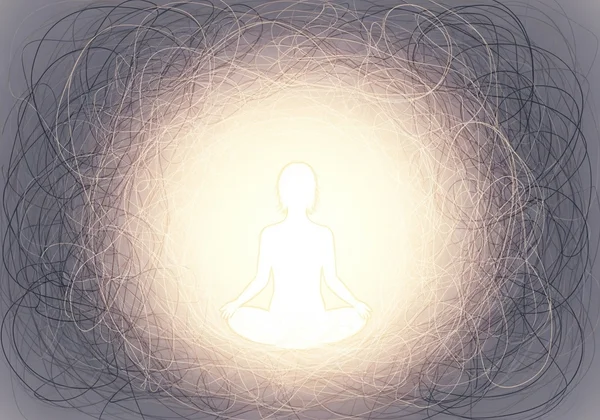Beyond Your Trauma Test: 5 Grounding Techniques for Instant Calm
Feeling overwhelmed, disconnected, or caught in a whirlwind of anxiety? You are not alone. These moments can feel like your internal alarm system is blaring, leaving you feeling lost and untethered from the present. Many people find themselves asking, How do I know if I have trauma? While the answer is complex, learning to manage these intense feelings is a powerful first step. This guide offers you five simple and immediate grounding techniques for trauma to gently anchor you back to the here and now, soothe your nervous system, and help you reclaim a sense of safety and control. If you feel these symptoms are a frequent part of your life, understanding them more deeply might be helpful, and you can start with a free test.

What is Grounding and Why It Helps Trauma Responses?
Grounding is the practice of pulling your attention out of the chaotic storm of thoughts, memories, or future worries and anchoring it firmly in the present moment. It’s about using your five senses and your physical body to signal to your brain that you are safe, right here, right now. For individuals who have experienced trauma, the brain's threat-detection system can become hypersensitive, triggering intense emotional and physiological reactions even when there is no immediate danger.
Grounding techniques work by interrupting this cycle. They shift your focus from the internal turmoil to the external world, providing your brain with real-time, tangible proof of your current safety. This helps your nervous system settle, easing you from a state of alarm back into a calmer, more balanced feeling.
Reconnecting Your Mind and Body in Moments of Distress
Trauma can create a painful disconnect between the mind and body, a phenomenon often described as dissociation. You might feel numb, spaced out, or as if you're watching your life from outside yourself. Grounding acts as a bridge, gently re-establishing that crucial mind-body connection. By intentionally noticing the feeling of your feet on the floor or the texture of the chair beneath you, you are reaffirming your physical presence and reminding your entire being that you exist in this current, safe moment.

Understanding Your Fight, Flight, Freeze, or Fawn Response
When faced with a perceived threat, your body automatically kicks into survival mode—the fight, flight, freeze, or fawn response. Trauma can cause this system to become stuck in the "on" position. Grounding techniques are a way to manually turn down the dial on this alarm. They communicate directly with the primitive parts of your brain, assuring them that the threat has passed and it's safe to stand down. Acknowledging this physiological process is not a sign of weakness; it's a testament to your body's powerful drive to protect you. If you often feel stuck in these states, you might want to explore your responses further.
Simple Grounding Techniques for Anxiety and Overwhelm
What makes these exercises so powerful is how simple and accessible they are. You can do them anywhere, anytime, without anyone even knowing. Find one or two that resonate with you and practice them when you feel calm, so they become second nature during times of stress.
The 5-4-3-2-1 Method: Engage Your Senses
This is a classic and highly effective technique because it methodically engages all your senses, pulling your focus outward.
-
5 THINGS YOU CAN SEE: Look around you and slowly name five things you see. Notice details. The color of a book, the light hitting a leaf, a crack in the ceiling.
-
4 THINGS YOU CAN FEEL: Bring your attention to the physical sensations. Name four things you can feel. The soft texture of your shirt, the solid pressure of the floor under your feet, the cool air on your skin, the weight of your phone in your hand.
-
3 THINGS YOU CAN HEAR: Listen carefully and identify three distinct sounds. The hum of a refrigerator, birds chirping outside, the distant sound of traffic.
-
2 THINGS YOU CAN SMELL: Take a moment to notice two different scents. The aroma of coffee, the clean smell of soap on your hands, or the scent of the air after rain.
-
1 THING YOU CAN TASTE: Focus on one thing you can taste. The lingering flavor of your last meal, the mintiness of toothpaste, or simply the neutral taste of your own mouth.

Instant Cool Down: Holding an Ice Cube or Cold Water
Temperature can be a powerful anchor to the present. The intense sensation of cold is very difficult for the brain to ignore, making it an excellent circuit breaker for overwhelming emotions or dissociation.
Simply hold an ice cube in your hand, focusing all your attention on the sharp cold and the sensation of it melting. Alternatively, splash cold water on your face or run your wrists under a cold tap. The shock of the cold can quickly bring your awareness back to your body and the immediate environment.
Mindful Breathing: Your Anchor in the Present
Your breath is always with you, making it a reliable and portable grounding tool. While "just breathe" can feel dismissive, mindful breathing is about focused attention.
Try "box breathing": Inhale slowly for a count of four, hold your breath for a count of four, exhale slowly for a count of four, and hold the exhale for a count of four. Repeat this several times. The rhythmic, predictable pattern is calming to the nervous system and forces your mind to concentrate on the count, leaving less room for anxious thoughts. If this pattern feels difficult, simply focus on making your exhale slightly longer than your inhale. This activates the vagus nerve, which helps slow your heart rate.
Gentle Movement: Reconnecting Through Your Body
When you feel stuck or frozen, gentle, deliberate movement can help release trapped energy and bring you back into your body.
Stand up and stretch your arms overhead. Roll your shoulders back and down. Slowly press your feet into the floor, one at a time, feeling the connection with the ground. You can also try stomping your feet gently or pushing against a wall. The goal is to feel your muscles engage and to reconnect with your body’s physical strength and presence. Recognizing these bodily signals is key, and an online trauma tool can help you identify patterns.
Focusing on a Physical Sensation: A Subtle Return
This technique is excellent for situations where you need to be discreet. It’s about choosing one physical sensation and pouring all of your attention into it.
Press your thumb and forefinger together and notice the feeling of the pressure. Wiggle your toes inside your shoes and concentrate on the movement and the texture of your socks. You could also hold a small object with a distinct texture, like a smooth stone or a textured keychain, and focus solely on how it feels in your hand. This micro-focus draws your attention away from the internal chaos to a single, manageable point.
When to Use These Grounding Techniques for Trauma
These tools are most effective when used both reactively in moments of crisis and proactively as part of a daily routine to build resilience.
Managing Flashbacks, Panic Attacks, and Dissociation
During acute moments of distress, such as a flashback or panic attack, your priority is to reorient yourself to safety. Immediately turn to a strong sensory technique like the 5-4-3-2-1 method or holding an ice cube. It may be helpful to say out loud, "My name is [Your Name]. I am in [Your Location]. The date is [Today's Date]. I am safe right now." This verbal affirmation reinforces the sensory input.
Integrating Grounding into Daily Self-Care
You don't have to wait for a crisis to practice grounding. Integrating small moments of mindful presence into your day can help regulate your nervous system over time, making it less prone to hyperarousal. Take 30 seconds to feel your feet on the floor while waiting for the kettle to boil. Practice box breathing before a stressful meeting. The more you practice, the easier it will be to access these skills when you need them most. Consistently needing these techniques may suggest deeper patterns, which a childhood trauma testcan help illuminate.
Empowering Yourself: Your First Step Towards Calm
Mastering grounding techniques is an act of profound self-compassion and empowerment. It’s a way of telling yourself, "I can handle this feeling. I can bring myself back to safety." While these tools are invaluable for managing symptoms in the moment, they are one part of a larger healing journey. Understanding the root causes of your distress is the next courageous step.
Recognizing your triggers and responses is key to long-term well-being. If you find yourself frequently needing to ground yourself from overwhelming emotions, it may be beneficial to explore these experiences in a structured way. Taking a confidential, scientifically-designed assessment can be a gentle, validating starting point. We invite you to take the first step on our homepage to better understand your emotional health.

Frequently Asked Questions About Grounding & Trauma
Can grounding techniques cure trauma?
No, grounding techniques are not a cure for trauma, but they are an essential coping skill. They are designed to manage acute symptoms and help you regain a sense of safety in the present moment. True healing from trauma often involves processing the underlying experiences with the support of a qualified mental health professional. Grounding is a vital tool on that journey, not the destination itself.
How do I know if I have trauma?
Trauma responses can look different for everyone. They might include anxiety, flashbacks, nightmares, emotional numbness, difficulty with relationships, or a persistent feeling of being on edge. If you're questioning your experiences and their impact on your life, a confidential screening tool can be an incredibly helpful first step. Our free, anonymous trauma test is designed to help you explore these symptoms in a safe, non-judgmental way.
Is it possible to self-diagnose trauma?
It is not possible to self-diagnose a clinical condition like Post-Traumatic Stress Disorder (PTSD). A formal diagnosis must be made by a licensed mental health professional. However, you are the expert on your own life and feelings. Using a tool like an online screener can help you organize your experiences and provide you with language to discuss them with a doctor or therapist. Think of it as gathering information, not making a diagnosis.
What is the most accurate trauma test?
While no online quiz can replace a comprehensive clinical evaluation, the most helpful screeners are those designed with input from mental health professionals. The goal is not a definitive diagnosis but valuable insight. The assessment we offer is a scientifically-designed preliminary screening tool that can help you identify potential trauma symptoms and provide a personalized report, offering a clear and supportive starting point for your journey toward understanding and healing. You can discover your results today.